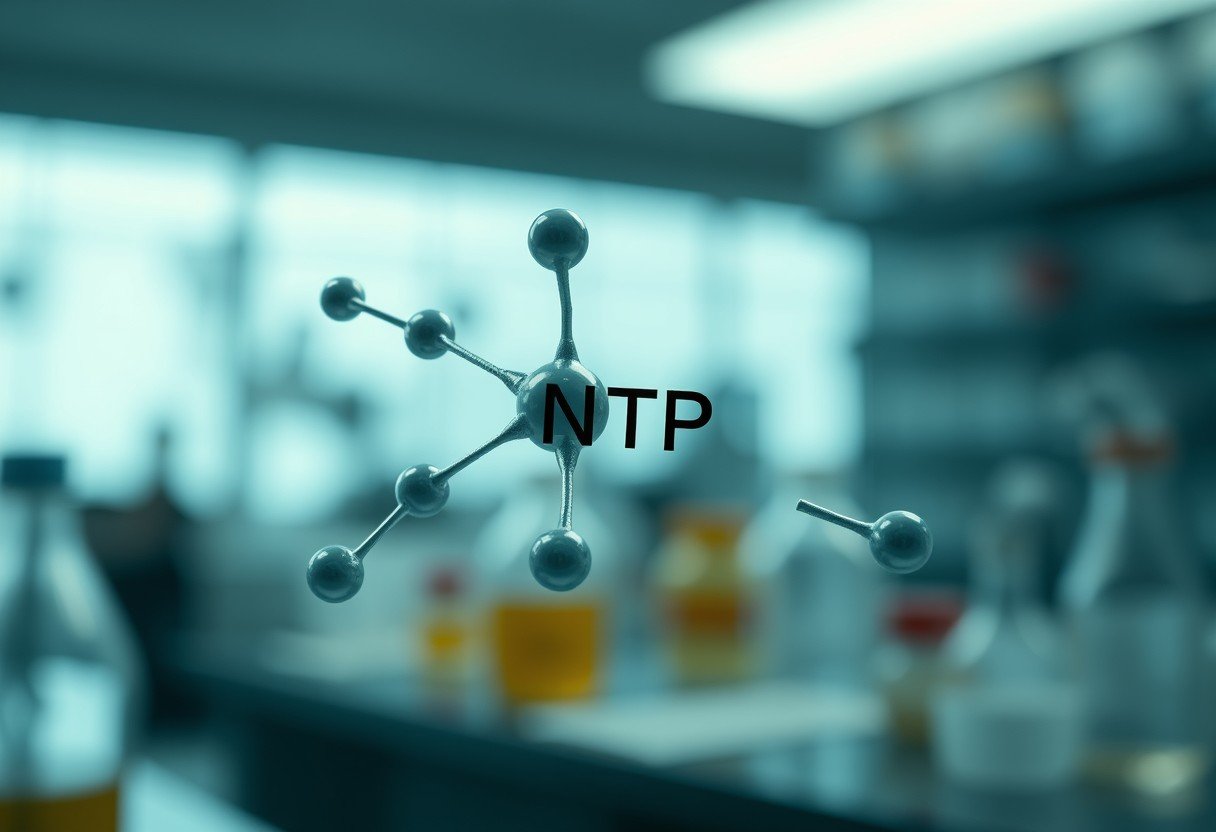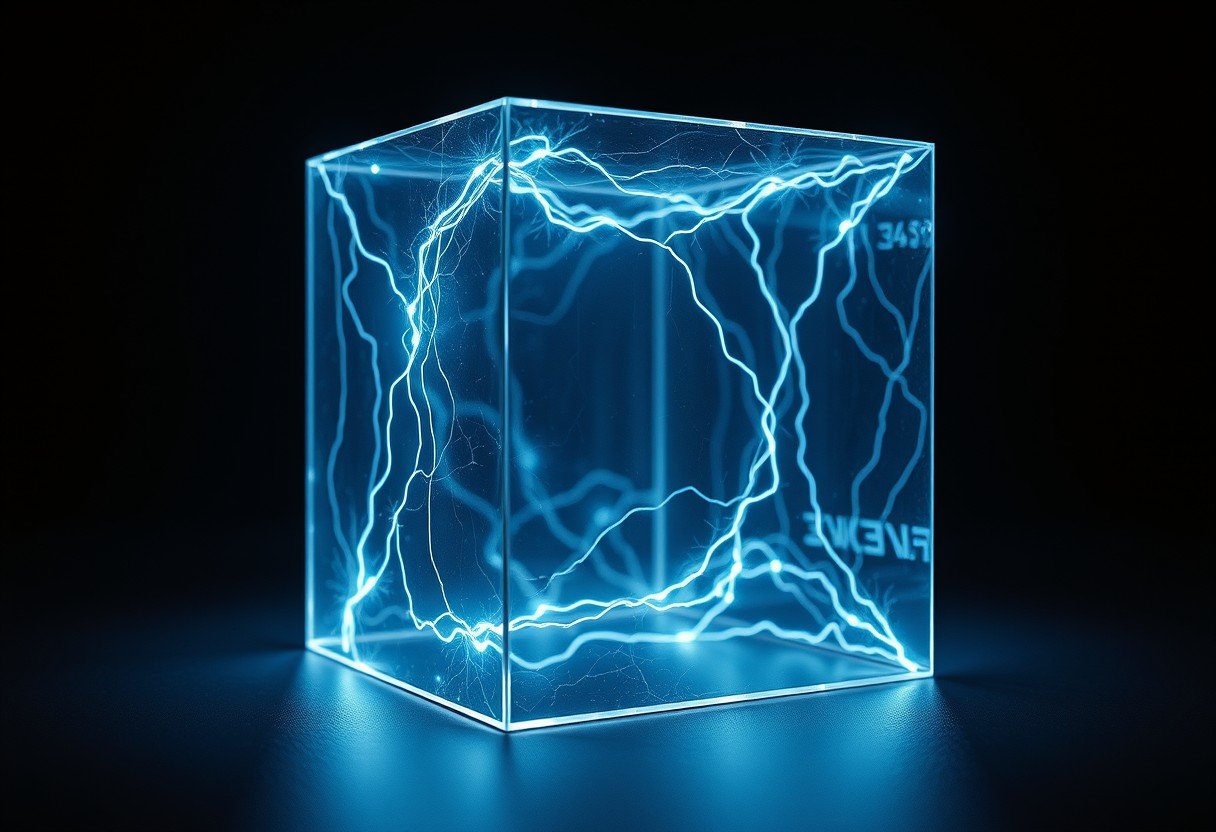DNA synthesis is a core process of life, creating new copies of genetic material. The energy to power this complex task doesn’t come from a distant source. Instead, it’s cleverly packaged within the very building blocks used to construct the DNA strand. The deoxynucleoside triphosphate (dNTP) molecules carry their own energy, specifically within their phosphate groups. Breaking these high-energy bonds fuels the creation of the DNA backbone, ensuring replication is both efficient and accurate.
What are dNTPs and Why are They Important
Deoxynucleoside triphosphates, or dNTPs, are the fundamental monomers, or building blocks, for DNA. Think of them as individual bricks used to build a long, complex wall. Without a steady supply of these bricks, DNA replication would come to a halt.
Each dNTP molecule has a precise structure consisting of three distinct parts. This structure is what allows it to perform its dual function of providing both the material and the energy for DNA synthesis.
- A Deoxyribose Sugar: This five-carbon sugar forms a part of the DNA’s structural backbone.
- A Nitrogenous Base: This is the part that stores genetic information. It can be adenine (A), guanine (G), cytosine (C), or thymine (T).
- A Triphosphate Group: A chain of three phosphate groups attached to the sugar. This is the molecule’s power source.
Their primary role is to be added one by one to a growing DNA strand by an enzyme called DNA polymerase. However, their importance goes beyond just being a structural component. Each dNTP carries the necessary energy for its own incorporation into the DNA chain.
The Triphosphate Group is DNA’s Power Pack
The true source of energy within a dNTP lies in its triphosphate tail. This is a chain of three phosphate groups linked together. These connections, known as phosphoanhydride bonds, are considered “high-energy” bonds.
This high energy exists because the phosphate groups are all negatively charged. Like magnets with the same poles facing each other, these groups repel one another, creating tension and storing a significant amount of potential energy in their bonds. When these bonds are broken, that stored energy is released and put to work.
The energy for DNA synthesis is primarily derived from the hydrolysis of these phosphate bonds in the dNTP molecules. This is a highly efficient system, as the energy source is delivered directly to the site of DNA construction along with the building block itself.
How is the Energy Released during DNA Synthesis
The release of energy is a beautifully orchestrated chemical reaction that happens at the moment a new nucleotide is added to the growing DNA strand. When a dNTP approaches the DNA chain, the DNA polymerase enzyme helps it find its correct partner on the template strand.
Once the correct match is made, the enzyme catalyzes a reaction. It breaks the bond between the first phosphate group (the alpha phosphate) and the second phosphate group (the beta phosphate) of the incoming dNTP.
This cleavage releases the two outer phosphate groups (the beta and gamma phosphates) as a single molecule called pyrophosphate. The energy unleashed from this bond-breaking event is immediately used to form a strong phosphodiester bond, which links the remaining nucleotide to the growing DNA strand. To make the process irreversible, the cell quickly breaks down the pyrophosphate into two individual phosphate ions, releasing even more energy and preventing the reaction from going backward.
The Role of DNA Polymerase in Using this Energy
DNA polymerase is the master enzyme responsible for synthesizing DNA. It does more than just assemble the strand; it actively harnesses the energy provided by the dNTPs to drive the process forward.
The enzyme’s active site is perfectly shaped to hold the template DNA strand, the end of the new DNA strand, and the incoming dNTP. DNA polymerase facilitates the breaking of the phosphate bond and uses the released energy to catalyze the formation of the new phosphodiester bond. This ensures the nucleotide is added securely and the chain grows.
Furthermore, DNA polymerases have a proofreading function to ensure accuracy. If a wrong nucleotide is accidentally added, the enzyme can pause, remove the incorrect unit, and insert the correct one. This error-correction process also consumes energy, highlighting how vital the dNTP’s energy supply is for maintaining the integrity of our genetic code.
Why High-Energy Phosphate Bonds are Key
The secret to the dNTP’s energy lies in the chemistry of its phosphate bonds. These are not just any bonds; they are high-energy phosphoanhydride bonds that are relatively unstable and release a substantial amount of free energy when hydrolyzed or broken.
This large energy release is what makes the DNA polymerization reaction so energetically favorable. It pushes the synthesis reaction strongly in the forward direction, ensuring that the DNA chain continues to grow efficiently. The process is further helped by metal ions, particularly magnesium (Mg²⁺).
Magnesium ions are crucial cofactors that stabilize the negative charges on the phosphate groups. This stabilization makes it easier for the DNA polymerase enzyme to attack the bond and release the pyrophosphate, effectively lowering the energy barrier for the reaction to occur.
Comparison of Nucleotide Energy Sources
| Nucleotide Type | Primary Energy Source |
|---|---|
| dNTPs (for DNA) | Hydrolysis of the triphosphate group |
| NTPs (for RNA) | Hydrolysis of the triphosphate group |
| dNDPs (diphosphates) | Hydrolysis of the diphosphate group (less energy) |
Broader Impact on DNA Accuracy and Cell Life
The energy utilization in DNA synthesis has profound biological implications. The substantial energy released at each step helps ensure the fidelity, or accuracy, of DNA replication. This energy allows DNA polymerase to perform its proofreading function effectively, removing errors and maintaining the integrity of the genetic blueprint.
This process safeguards genetic information, ensuring that a faithful copy of DNA is passed on during cell division. Without this built-in energy supply, replication would be slower, more error-prone, and potentially unsustainable for complex life.
The energy dynamics of nucleotides extend beyond just DNA replication. The same principles of high-energy phosphate bonds apply to ATP (an NTP), the main energy currency of the cell. This shows an interconnected web of energy management that powers everything from muscle contraction and nerve impulses to the synthesis of proteins and RNA.
Frequently Asked Questions
Which part of a dNTP molecule provides the energy for DNA synthesis?
The energy comes from the three phosphate groups attached to the deoxyribose sugar. Specifically, the breaking of the high-energy bond between the first and second phosphate groups releases the energy needed to add the nucleotide to the growing DNA chain.
What happens to the two phosphates that are removed?
The two outer phosphate groups are released as a single molecule called pyrophosphate. This pyrophosphate is then quickly broken down (hydrolyzed) into two individual inorganic phosphate ions by another enzyme, which releases more energy and makes the DNA synthesis reaction irreversible.
Why are triphosphates used instead of diphosphates in DNA synthesis?
Triphosphates are used because breaking the bond between the first and second phosphate releases significantly more energy than breaking a bond in a diphosphate. This extra energy makes the reaction highly favorable, driving the synthesis process forward efficiently and ensuring the DNA chain elongates.
Does RNA synthesis use the same energy source?
Yes, RNA synthesis uses a very similar mechanism. It uses ribonucleoside triphosphates (NTPs) instead of dNTPs. The energy for adding a nucleotide to a growing RNA strand also comes from the cleavage of two phosphate groups from the incoming NTP.
What is the role of DNA polymerase in this energy process?
DNA polymerase is the enzyme that orchestrates the entire process. It not only selects the correct dNTP to add but also catalyzes the chemical reaction that breaks the high-energy phosphate bond and uses the released energy to form the new bond connecting the nucleotide to the DNA chain.









Leave a Comment